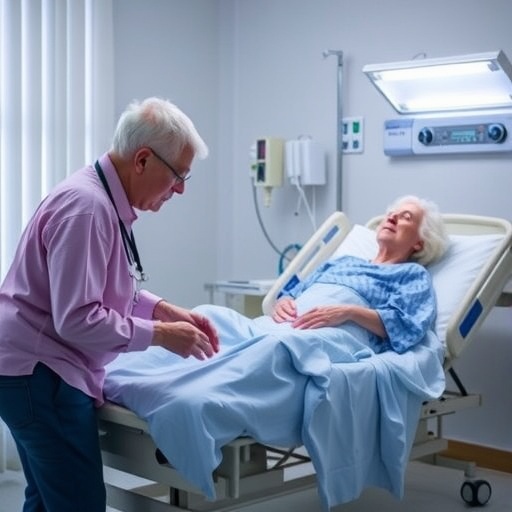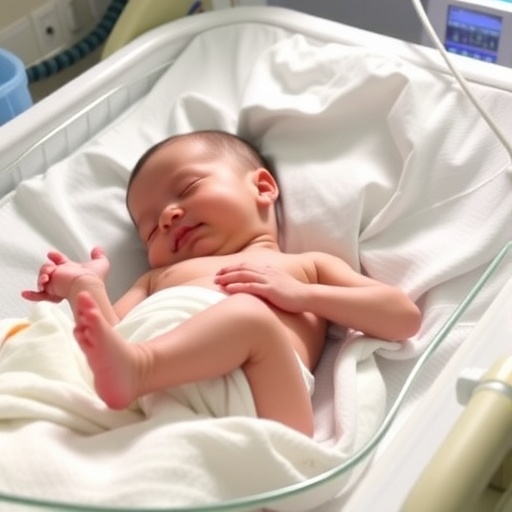In recent years, the phenomenon of in-hospital falls among geriatric patients has garnered growing attention within the medical community. As the population ages and the number of elderly patients admitted to hospitals rises, understanding the prevalence and implications of these incidents has become vital for improving patient care. A new study published in BMC Geriatrics shines a light on this pressing issue, detailing the prevalence of major injuries following in-hospital falls and identifying various associated factors.
Falls are one of the leading causes of injury among elderly patients during hospital stays, a trend that has significant implications for both patient outcomes and healthcare systems. The consequences of falls can be devastating, often leading to severe physical injuries such as fractures and head trauma, as well as extended hospital stays and increased healthcare costs. The authors of the study delve into this critical topic, highlighting that a comprehensive understanding of the factors contributing to falls can aid in developing effective prevention strategies.
The study conducted by Jegal and colleagues involved a thorough analysis of data collected from a wide range of geriatric patients across various hospital settings. The researchers aimed to provide a clearer picture of how prevalent falls are in hospitals, estimating that a staggering percentage of geriatric patients experience falls during their hospital stay. This statistic alone is alarming and warrants immediate attention from healthcare professionals aiming to improve patient safety.
One of the significant findings of the study is the identification of various risk factors that contribute to falls among geriatric patients. These factors can be categorized into intrinsic and extrinsic variables, which interact to increase the likelihood of falls. Intrinsic factors include issues such as impaired mobility, cognitive decline, and muscle weakness, which are often prevalent among the elderly. Extrinsic factors, on the other hand, encompass environmental hazards within the hospital setting, such as cluttered hallways, inadequate lighting, and the lack of assistive devices.
The implications of these findings extend beyond merely identifying the problem. Understanding the risk factors allows healthcare providers to tailor interventions specific to the needs of geriatric patients. The study suggests that hospitals should implement multifaceted fall prevention programs that address both intrinsic and extrinsic factors, thereby reducing the incidence of falls and subsequent injuries.
Moreover, the research indicates that nursing staff plays a critical role in fall prevention efforts. Continuous training and education of nurses on the best practices for monitoring and assisting geriatric patients can significantly decrease the number of falls. By fostering an environment where healthcare professionals are aware of the risk factors and prevention strategies, hospitals can enhance the overall safety of their geriatric patients.
Additionally, the psychological aspects associated with falls cannot be overlooked. The fear of falling often leads to reduced mobility among elderly patients, creating a vicious cycle that further increases their risk of falls. The study highlights the necessity of addressing these psychological barriers by providing reassurance and education to patients about safety measures in place, empowering them to regain confidence in their mobility.
In terms of clinical practice, the evidence presented in this study reinforces the need for standardized protocols for assessing fall risk upon patient admission. Implementing comprehensive fall risk assessment tools can help identify those patients most at risk and prompt timely interventions that can mitigate potential accidents. This proactive approach can be instrumental in reducing the overall incidence of falls in hospital settings.
The authors also call for a collaborative approach involving multidisciplinary teams in hospitals, emphasizing that fall prevention should be a collective effort. Engaging various healthcare professionals, including physicians, nurses, physical therapists, and occupational therapists, can enhance the breadth of knowledge and strategies implemented to safeguard elderly patients against falls.
While this research lays the groundwork for improved understanding and intervention regarding in-hospital falls among the elderly, it also opens avenues for future research. There remains much to explore concerning the long-term effects of falls on both recovery outcomes and quality of life for geriatric patients. Future studies could expand upon these findings to establish best practices that can be replicated in various healthcare settings worldwide.
In conclusion, the alarming prevalence of in-hospital falls among geriatric patients calls for immediate attention and action within healthcare systems. The study by Jegal and colleagues provides critical insights into the factors contributing to these incidents and emphasizes the need for multi-faceted, interdisciplinary approaches to fall prevention. By implementing tailored strategies and fostering an environment of awareness and safety, hospitals can significantly improve the outcomes for their most vulnerable patients.
While the significance of this study cannot be overstated, it also serves as a clarion call for researchers, healthcare providers, and policymakers to prioritize fall prevention in the geriatric population actively. Addressing the underlying causes of falls and recognizing the potential for major injuries will ultimately lead to safer hospital environments, better patient care, and improved quality of life for older adults.
As we strive to create hospitals that prioritize the safety of all patients, it is imperative that we heed the findings of this study, recognizing the interconnectedness of risk factors and the urgency behind effective preventive measures. The road ahead must be paved with knowledge, collaboration, and commitment to ensuring that geriatric patients receive the safe care they deserve.
Subject of Research: In-hospital falls among geriatric patients
Article Title: In-hospital falls among geriatric patients: prevalence of major injuries and associated factors
Article References:
Jegal, Y., Lee, CC., Jeon, Y.D. et al. In-hospital falls among geriatric patients: prevalence of major injuries and associated factors.
BMC Geriatr (2025). https://doi.org/10.1186/s12877-025-06480-w
Image Credits: AI Generated
DOI: 10.1186/s12877-025-06480-w
Keywords: Geriatric patients, in-hospital falls, fall prevention, risk factors, major injuries.
Tags: BMC Geriatrics study findingsconsequences of falls in elderly patientselderly patient safetyfall prevention strategies in healthcaregeriatric in-hospital fallshealthcare costs associated with fallshospital stay complications for seniorsimproving patient care for elderly patientsinjury rates in geriatric patientsmajor injuries from in-hospital fallsrisk factors for falls in hospitalsunderstanding fall prevalence in hospitals





